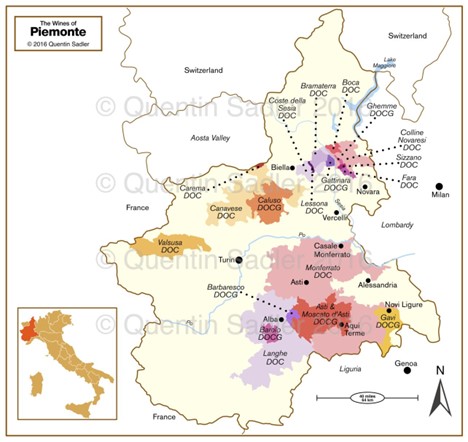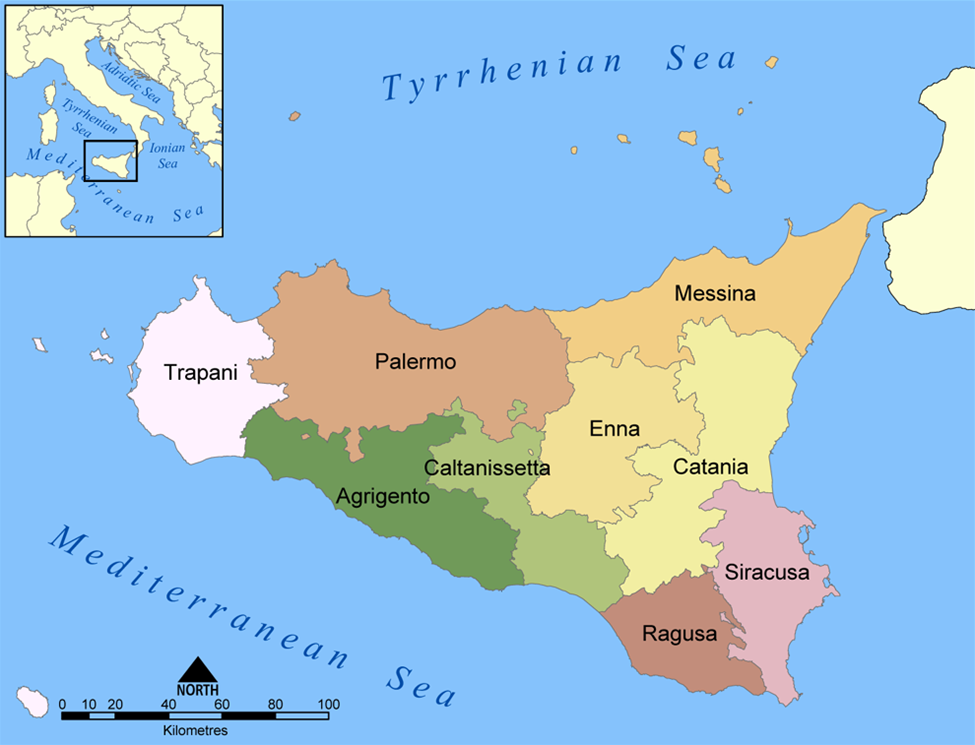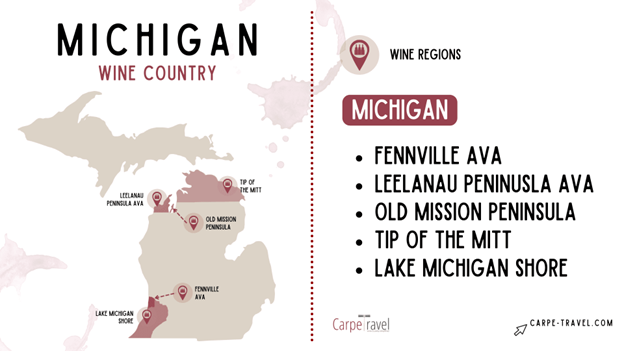Holiday Market Wine
THE SILVER CLUB
MARCH 2023 WINES
-
VINTAGE LONGBOTTOM H CHARDONNAY
-
KWV CLASSIC COLLECTION PINOTAGE
-
DREI DONà LE VIE NUOVE SANGIOVESE
-
FATTORIA SAN FELO VIOGNIER
-
BODEGAS SAN GREGORIO ANCIANO OLD VINE GARNACHA
-
SUSANA BALBO CRIOS CABERNET SAUVIGNON

VINTAGE LONGBOTTOM H CHARDONNAY
2018 | $11.99
DESCRIPTION
One of the most popular and versatile white wine grapes, Chardonnay offers a wide range of flavors and styles depending on where it is grown and how it is vinified.
Vintage Longbottom is a mother and daughter wine company, handcrafting wines from McLaren Vale and Adelaide Hills in Australia, celebrating the regions in which the wines are grown, and the passing of the seasons in which they are made.
A narrow band of hills and valleys east of the city of Adelaide, the Adelaide Hills region is a diverse landscape featuring a variety of microclimates. In general, it is moderate with high-altitude areas cooler and wetter compared to its warmer, lower areas. Piccadilly Valley, the part of Adelaide Hills closest to the city, was first staked out by a grower named Brian Croser, in the 1970s for a cool spot to grow Chardonnay.
Twenty years after releasing her first wave of classic red wines with husband Mark from the Limestone Coast’s famed Padthaway region, a new chapter in the Vintage Longbottom story has begun with the arrival of daughter Margo into the company after the passing of Kim’s husband.
The H range was always been made to be a little outside the square in Padthaway terms, and a move to the Adelaide Hills for fruit sourcing makes these wines even more exciting with their elegant, leaner and edgier characters front of mind.
The H range now consists of a sauvignon blanc and chardonnay sourced from one of the most distinctive, older and higher-altitude vineyards in the Lenswood district.
TASTING NOTES
NOSE: Aromas of pink grapefruit, orange blossom and brioche.
PALATE: This wine is medium bodied with flavors of lemon zest, white peach, and spicy nutmeg. It displays a creamy and buttery mouthfeel with notes of peach and lemon curd.
PAIRING: Mild buttery or creamy dishes, meaty fish, shellfish, poultry, and pork.
FUN FACTS: Limpid yellow. Mineral- and lees-accented citrus and orchard fruit aromas show fine definition and hints of honeysuckle and sweet butter. Displays a deeper pit fruit quality on the palate, offering juicy nectarine and pear flavors that show firm back-end tension. The mineral quality repeats on the persistent finish, which leaves behind Meyer lemon and floral notes. Barrel-fermented and aged in French oak puncheons, 25% of them new.
Vinous Magazine ~ 92 Points
Radiant gold in color, this classy Adelaide Hills Chardonnay is polished, bright and food friendly. It takes a few minutes to open in glass, and shouldn't be sipped too cold, but at its best it offers ripe lemons and oranges, white spice, honeysuckle, some seashell reduction and some vanillin oak notes. The mouthfeel is buttery in texture, supported by spicy oak, buoyed by bright acidity and with a long finish like the salted rim of a citrusy cocktail. Drink with a wide range of dishes.
Wine Enthusiast Magazine ~ 90 Points
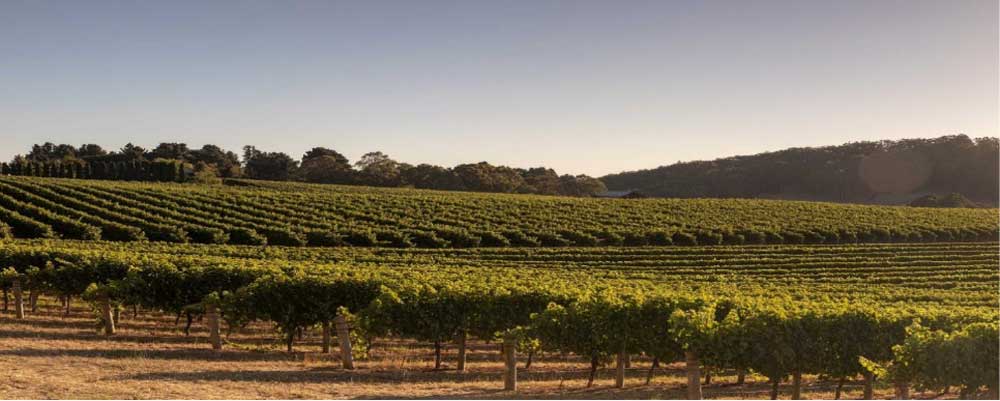
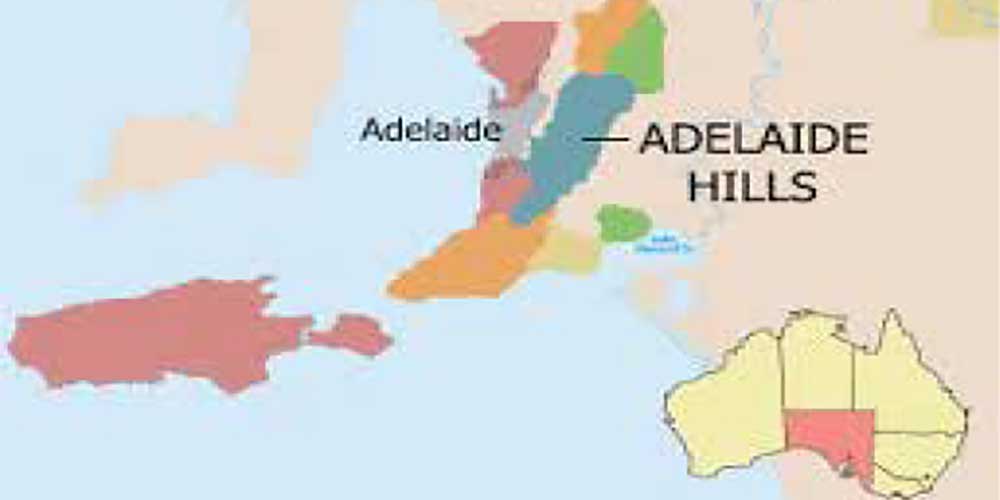

KWV CLASSIC COLLECTION PINOTAGE
2019 | $11.99
DESCRIPTION
KWV is a pioneering cellar in Paarl, South Africa and actively involved in the farming and vineyard practices of 54 farms across various regions in the Western Cape.
KWV’s cellar facilities are situated in Paarl in the Cape Winelands and cover approximately 32 hectares. Its impressive Cathedral Cellar built in 1930 remains the heart of its wine production activities. KWV’s flexibility and ability to source the building blocks for its wines from various vineyard sites is a key KWV strength and competitive advantage: due to its ability to source from diverse geographic regions its cellars produce wine that consistently delivers on quality.
This legacy has its roots in a history dating back to 1918, when KWV was founded by a group of South African wine farmers who were driven to secure a successful and profitable future for the country’s grape growers. Its viticulture team oversees the planting, planning and vineyard managing of approximately 420 different vineyards, equating to 1200 hectares of vines.
Pinotage is South Africa's very own grape and a must-try for anyone looking to expand their viticultural horizons. The grape is a genetic cross between picky Pinot Noir and prolific Cinsault, aka Hermitage. It was created by scientist Abraham Perold in 1925 at Stellenbosch University, Pinotage was made by and for South Africa. These small, thick-skinned grapes create deep, inky wines with distinct, bold flavors.
KWV Classic Collection Pinotage 2019
This wine is 100% Pinotage grapes. It was aged in oak for eight to ten months.
TASTING NOTES
NOSE: Aromas of blackcurrant, vanilla, plums and wild berries.
PALATE: Black and purple fruit notes like blackberry, plum, blackcurrant, figs, maybe even a slight touch of banana. A bottle of Pinotage can be drunk young but becomes especially good with a bit of age as the flavors soften and deepen. Aged Pinotage displays hints of smoke, hoisin sauce, tobacco, bacon, and grilled meats mingled with dark fruit notes.
PAIRING: This is a wine that goes great with the charred smokiness of a summer BBQ. Pinotage loves grilled lamb and veggies, a burger, beef, creamy risotto, or a creamy plate of vegetarian dhaal.

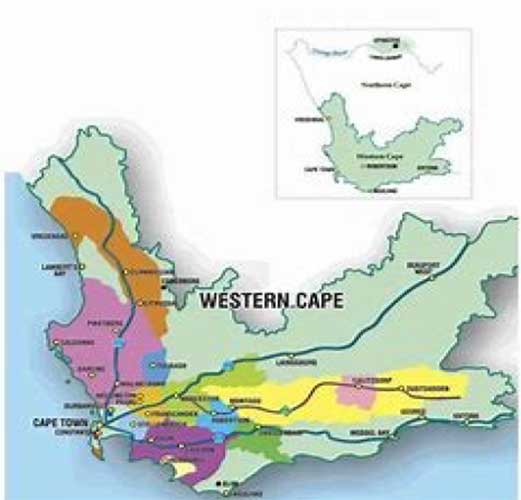

DREI DONà LE VIE NUOVE SANGIOVESE
2018 | $15.99
DESCRIPTION
The Drei Donà estate is located on the ancient Romagna hills between the towns of Forlì, Castrocaro and Predappio. The ‘La Palazza’ farmhouse was built around a watchtower constructed by Caterina Sforza in 1481 -- in a strategic position on the gentle slopes of Massa di Vecchiazzano to defend her lands.
The property has been in the hands of the Drei Donà family since the last century, and although it has always been dedicated to producing sangiovese grapes, it has undergone a radical transformation under the present owner, Count Claudio Drei Donà.
After acquiring a law degree and working in the insurance industry, Count Drei Donà, together with his son Enrico, has dedicated his efforts solely to the property, decisively guiding its activities towards increasingly high objectives.
Most of the 23 hectares of vineyards are planted with sangiovese grapes, which were indigenous to the property. These old vines have been studied, selected and propagated to maintain La Palazza’s original clones.
The Drei Donà philosophy is based upon the belief that wines must be the most faithful expression of the terroir they come from and thus the respect for the estate’s unique terroir guides all aspects of the production.
The winery's working philosophy is extremely strict: the wines that Drei Donà produces are the result of exacting standards first in the vineyard, and then in the cellar. In this way, the winery starts with the highest quality grapes, and ferments and ages them in modern cellars to produce a wine that is a true expression of the Massa di Vecchiazzano Romagnan terroir. The winery also produces two aged grappas and an extra-virgin olive oil.
Drei Donà is universally recognized as a reference for sangiovese, which finds its most typical expression here. Their selection of sangiovese comes from careful research and restoration of the historical sangiovese clones.
Drei Donà Le Vie Nuove Sangiovese 2018
This wine is a blend of 90% sangiovese and 10% indigenous red grape varieties. It goes through alcoholic fermentation in stainless-steel tanks for 7-10 days and subsequently malolactic fermentation. After the end of fermentation, Le Vie Nuove Sangiovese remains on the lees for 48 months. Lees aging is the process of letting wines mature and age on top of spent yeast.
TASTING NOTES
NOSE: Fruit and floral bouquet with aromas of rose, cherry, violet, raspberry and light notes of spices and herbs.
PALATE: Notes of sour cherry, blackcurrant, and raspberry with a fruity texture and young pleasant tannins.
PAIRING: Beef, pasta, lamb, game, and a great partner for BBQ.
FUN FACT: Just a note to explain the names of the wines: they all come from the names of the horses that the Drei Donà family also breeds on the farm.
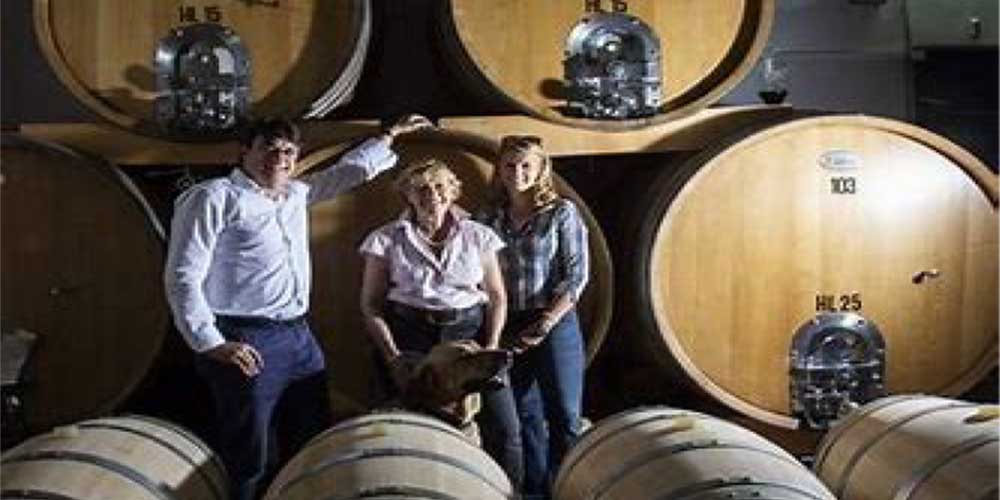
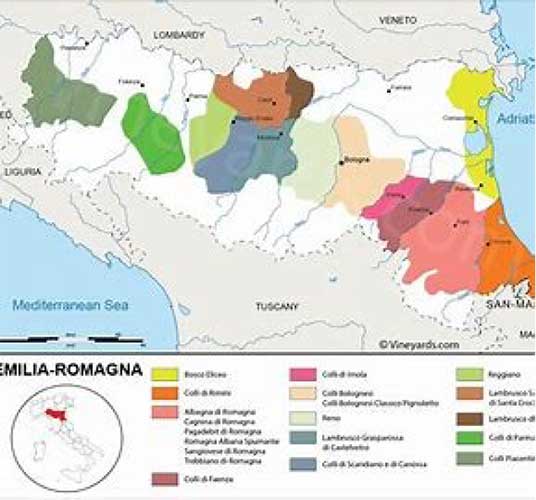

FATTORIA SAN FELO VIOGNIER
2018 | $12.99
DESCRIPTION
Fattoria San Felo was created in 2001 by the Vanni family fueled by their passion for viticulture, their attachment to the farming traditions of the area and their desire to promote the Maremma viticultural appellation. Fattoria San Felo is located in the heart of the Tuscan Maremma area on the slopes of Mount Amiata between the hills of Uccellina Park and Costa D’Argento.
The vineyards consist of sandstone soils rich in schist. The Mediterranean climate is influenced by sea breezes, sun-filled days and cool nights. The sea has an important impact on the local microclimate with temperature variations that are never too extreme. The grapes ripen slowly, leading to fresh and elegant wines rich in taste and minerality.
Winemaker Fabrizio Moltard has worked with some of the most prestigious wineries in Italy and is described in the wine world as possessing great professionalism, sensory capabilities and profound experience. He shows enormous respect for terroir and has an extraordinary ability to translate this reverence into the unique identities that he creates for each wine. Decanter Magazine called Fabrizio “the secret ingredient in many top Maremma wineries.”
Fabrizio Moltard graduated from the Facoltà di Agraria in Florence in 1987. He has worked for the Marchesi Frescobaldi family, Angelo Gaja in Montalcino and Bolgheri, Planeta in Sicily, Agostina Pieri in Brunello di Montalcino, Azienda Agricola Montauto in Manciaco in the Maremma and Montepeloso on the Tuscan Coast. Fabrizio Moltard has been with Fattoria San Felo since their beginning.
Fattoria San Felo Viognier 2018
Viognier (vee-aa-nyay) is a white wine grape variety and the only variety permitted to be used in the French wine Condrieu in the Rhone Valley. Like chardonnay, viognier has the potential to produce full-bodied wines with a lush, soft character. In contrast to chardonnay, the viognier varietal has more natural aromatics that include notes of peach, pears, violets and minerality. The origin of the Viognier grape is unknown; it is presumed to be an ancient grape, possibly originating in Dalmatia (present day Croatia) and then brought to the Rhône by the Romans.
TASTING NOTES
NOSE: Aromas of yellow peach, citrus and a whiff of almond.
PALATE: An intense taste, full and round with a bright finish.
PAIRING: The highly aromatic and fruit forward nature of the grape allows viognier to pair well with spicy foods such as Thai cuisine. Other great pairings include fish-based main dishes, fish-based pasta or rice dishes, main dishes featuring white meats and sushi.
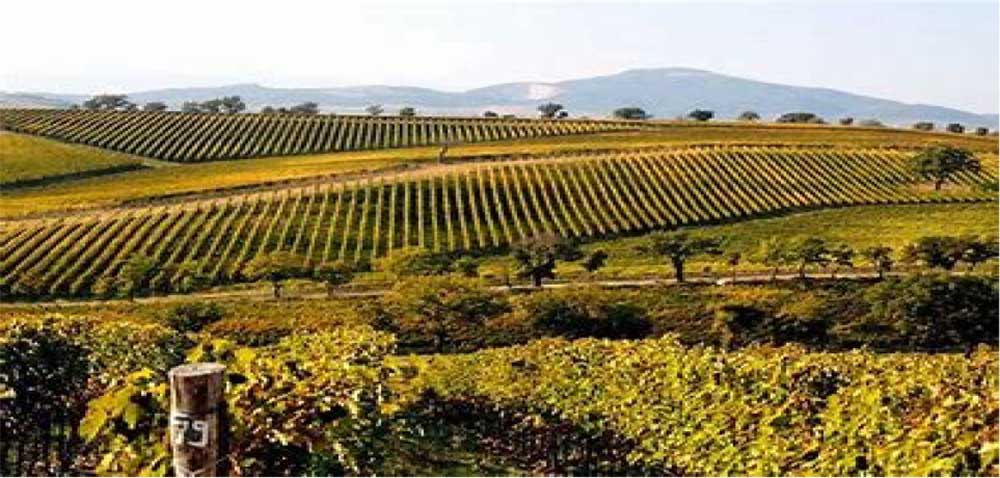
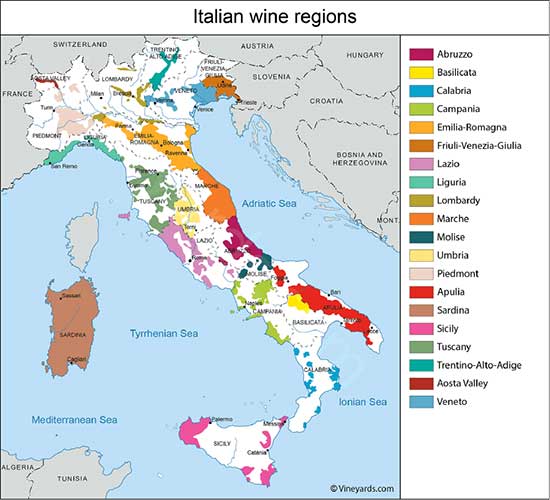

BODEGAS SAN GREGORIO ANCIANO OLD VINE GARNACHA
2016 | $9.99
DESCRIPTION
Bodega San Gregorio was founded in 1965 by a group of about 30 winegrowers in Cervera de la Cañada and belongs to the Calatayud Denomination of Origin (the governing organization overseeing wine production in Spain). In this territory, located in the foothills of the Iberian System, is where they select the best grapes from the Ribota and Manubles valleys, the westernmost area of the denomination. They have 700 hectares of crops located in the surroundings of Cervera, surrounding the Sierra de Armantes ridge.
Their average production is around two million kilos of grapes. In red grapes, the Garnacha variety predominates, along with Tempranillo, Syrah, Cabernet Sauvignon and Merlot. In white grapes the Macabeo. They export a good part of our production to the most demanding markets.
The cultivation of the vine in the area dates back to at least the second century BC, documented after the discovery of a winery in the Celtiberian site of Segeda, located between the municipalities of Belmonte de Gracián and Mara, just 20 km from Cervera. The first written reference to the high quality of the wines of the area dates back to the first century.
Bodegas San Gregorio Anciano Old Vine Garnacha 2016
If you like your wines big, bold and full of flavor then look no further! This wine comes from the collaboration of World class winemakers and local knowledge to produce a fruit driven wine typical of the Calatayud area, which encapsulates all the ruggedness, concentration, and character of the old vine fruit.
This wine is 100% garnacha grapes from vines with an average age of over 35 years are grown on chalk and clay soils at analtitude of 2000-3000 feet. The combination of free draining soils, minimal rainfall and unique microclimate all add to the excellent color and distinctive varietal aromas. The grapes are hand harvested, crushed and destemmed. Temperature controlled fermentation takes place for 7 days followed by a short maceration. 15% of the wine is matured in American and French oak for 4 months before bottling.
TASTING NOTES
NOSE: Pronounced intense aromas of fresh raspberry and cherry, combine with more complex aromas of prune, earthy notes, and sweet spice.
PALATE: Full bodied on the palate with flavors of soft raspberry and wild berries that lead to a long spicy finish
PAIRING: Drink with Tapas, barbequed foods, lamb and duck.
FUN FACTS: Decanter World Wine Awards ~ 90 Points
Gilbert & Gaillard ~ 91 Points



SUSANA BALBO CRIOS CABERNET SAUVIGNON
2020 | $15.99
DESCRIPTION
Born into a traditional family, Susana’s inquiring spirit and strong beliefs led her to choose an unconventional career for a woman of her time. In 1981, she graduated cum laude and became the first female enologist of Argentina.
At the beginning of her career, she faced some difficulties finding a job in Mendoza. Nevertheless, her will and determination took her to Cafayate, Salta, where she was hired to run the Sucesión Michel Torino winery, a huge, defying task for a young, single female winemaker in an industry that was run by men at the time. There, she took on the challenge of redefining Torrontes and turning it into a classy, elegant wine. Her innovative work and progress, as well as the quality of the wines she produced during that time, earned her a nickname, “Queen of Torrontes”, that she proudly carries until today.
After a few years serving as a consultant and working for some other important wineries such as Martins and Catena Zapata, in 1999, Susana decided to take a leap of faith and founded her own winery, thus achieving her lifelong dream of creating her own wines according to her vision and perspective.
CRIOS was born out of Susana Balbo’s love for her children and desire to forge a legacy for her family, helping them navigate their own life journeys with lessons learned from a lifetime of trailblazing entrepreneurship. The iconic handprint logo on each CRIOS bottle symbolizes the family bond and illustrates hands as powerful tools for mothers, allowing them to hold, to provide warmth, to nourish, and to comfort, as well as to teach the next generation the skills and wisdom achieved.
Susana Balbo CRIOS Cabernet Sauvignon 2020
CRIOS cabernet is hand harvested, macerated for 25 days, and experiences pump-overs in several stages of fermentation, as well as delestage. It is aged seven months in third to fifth-use French oak barrels.
TASTING NOTES
NOSE: Aromas of ripe plum, currant, fresh cherries, espresso and mocha tinged with spice, herbal notes, and smoke.
PALATE: Black fruits, especially blueberries, as well as black pepper stand out harmoniously. The ripe and vibrant tannins provide an elegant structure and a long and persistent finish.
PAIRING: Roasted or grilled meats, empanadas, and chili.
FUN FACTS: Wine Advocate Magazine ~ 90 Points
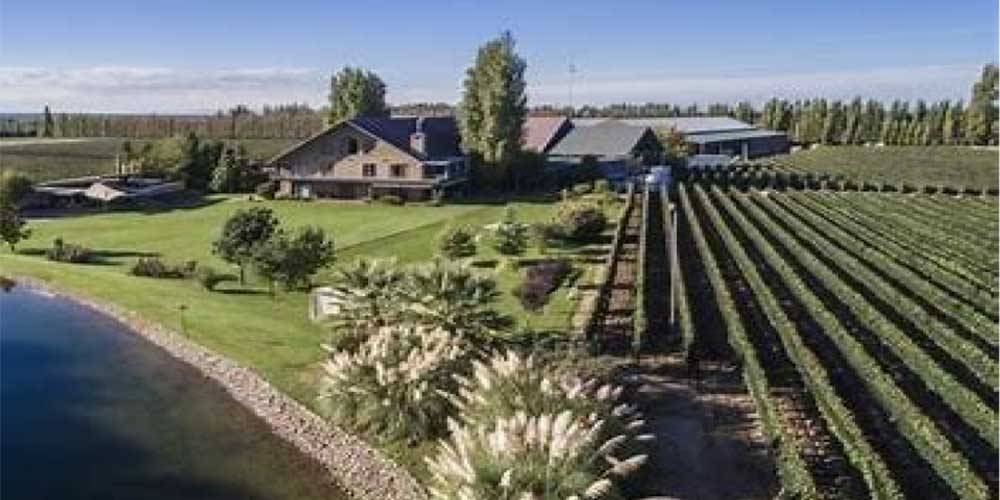
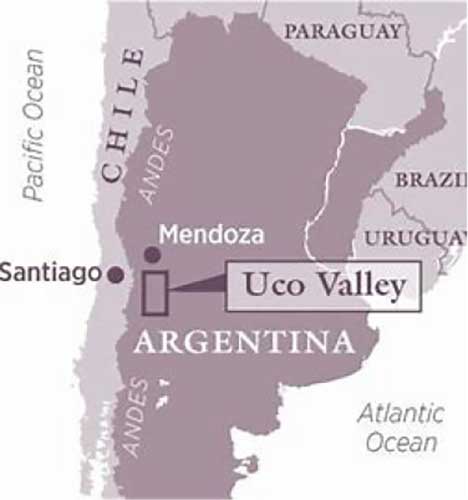
May 2023 WINES
-
Azul y Garanza DIT Celler Cabirol Tinto
-
Fattoria Il Muro ‘Violato’ Syrah
-
Alto Molino Malbec
-
Chateau Montguéret ‘Le Petit Saint Louis’ Rosé d’ Anjou
-
Viña Cousiño-Macul Chardonnay
-
Vintage Longbottom H Sauvignon Blanc

Azul y Garanza DIT Celler Cabirol Tinto
2019 | $16.99

DESCRIPTION
On the edge of Europe’s largest desert is the starting point for their project and their passion for these special terroirs, these one-of-a-kind places capable of breaking all limits and its essence being present in their wines, offering distinctive character and great expression.
Las Bardenas Reales of Navarre, Spain is an extreme place: poor and arid clay and limestone soils, a dry climate with a wide thermic range between night and day. Due to these harsh conditions vines here produce a limited crop but one of exceptional quality with highly concentrated, very small grapes. They planted fruit trees and indigenous shrubs around the vines to support biodiversity in this semi-desert environment.
A few kilometers from the desert the low mountains and the Pre-Pyrenees of Navarre begin. Here they found fabulous old Garnacha vines, growing wildly amid forest and biodiversity. Most of these vines, which are spread out in various isolated and exceedingly small parcels, are more than 100 years old. That they had been abandoned is not a negative for them, just the opposite: They are their most precious treasures and thanks to the invaluable support of the local vine growers, they have been able to recover them.
They are the first certified organic wines of Montsant. The vineyard, 20 to 75 years old, is in the Llabería mountain range (natural park), among Capçanes and Tivissa, surrounded by forest. Every summer afternoon, a wind coming from the Mediterranean called “Marinada” cools down the temperature and gives the wines a special freshness.
Dani Sánchez, from Azul y Garanza, in Navarra, founded DIT Celler with Toni Coca and recently took over the project solo. The vineyards, Mas d’En Fornós and Guiamets, surround the mountains of the natural park Llaberia in Priorat.
Azul Y Garanza DIT Celler Cabirol Tinto 2019
Cabirol is produced in Montsant, Spain. It is a blend of 70% Garnacha and 30% Tempranillo. The organic vines are between 20-35 years of age and grow in limestone and loam soils over a granite and slate base at an elevation of 400-600 meters. The grapes are fermented in concrete followed by 6 months aging in neutral French & American oak barrique.
This new DO (approved in 2001) forms a horseshoe around the Priorat region, taking its name from the rocky massif of Monsant. The vineyards fall in spectacularly beautiful hilly countryside, scattered between olive groves, forest and bare mountain peaks.
TASTING NOTES
NOSE: Floral and peppery spice notes.
PALATE: Silky, juicy, and fresh with raspberry and cherry flavors that are vibrant and intense. The jam jar fruit elements are lifted with racy acidity and held together with harmonious tannins. Great complexity with impressive evolution and length from start to finish.
PAIRING: Barbeque and grilled meats, smoky dishes, grits, polenta, Mexican food, lasagna, pizza, and tomato-based dishes.
WINERY WEBSITE: AyG-Dit-Cabirol
D.O. Montsant, Spain


Fattoria Il Muro ‘Violato’ Syrah
2018 | $13.99
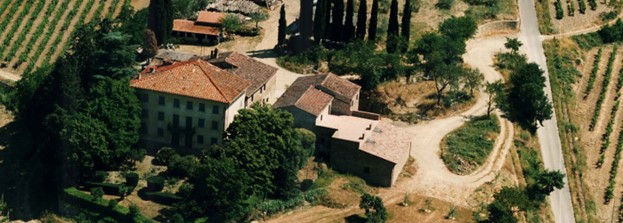
DESCRIPTION
The estate “Il Muro” has been owned by the Pancaro family for more than two centuries. Its land has always been used for vine cultivation thanks to its favorable microclimate and particular environmental conditions that are ideal for producing high quality grapes, allowing the creation of wines in the most environmentally sustainable and eco-friendly way.
The potential of the soils (“galestro” is the Italian name for soil comprised of loose marl and limestone) and the temperate climate, characterized by a wide range of temperatures due to the closeness to the Alpe of Poti, are the perfect ingredients of a habitat that improves the organoleptic qualities of grapes and the health of the vines.
The farm is situated in the very heart of Tuscany, a few miles away from Arezzo, a medieval city of Etruscan origin. It extends over an area of about sixty-five hectares, among woods and tilled land, vineyards, and olive groves. Though they have been producing wine for about two centuries, they labeled their wine for the first time in 2011. They made this bold decision with the desire to furnish the final consumer with the best possible quality glass or bottle of wine possible.
According to this philosophy only the grapes produced on their own land are being used for creating these high-quality wines.
They strive to grow their vines in the most sustainable way possible respecting the surrounding environment, since they believe that only favorable environmental conditions make it possible to obtain the best quality of the grape.
The farm adheres to the Measure 214 of the European Rural development Plan. This Act imposes the observance of strict rules which limit the use of chemicals to protect the environment and carry-on sustainable agriculture.
The estate is a patchwork quilt of different vineyards of different ages of vines (some are more than 30 years old; some are new), different varieties and different exposures. The vineyards extend over thirty hectares, and all are in perfect condition.
Fattoria Il Muro ‘Violato’ Syrah 2018
The name of the wine inspired by the color of the Syrah grape - deep purple garnet, rich and intense. They also took the inspiration from its color in creating the wine label. This wine comes from vineyards planted in 2003 and is 100% Syrah. The wine goes through fermentation in temperature controlled stainless steel tanks. It is then aged in big barrels of chestnut wood for around 6 months. Stefano de Blasi is the winemaker.
TASTING NOTES
NOSE: Bouquet with a myriad of red fruits, notes of ripe blackberries and plums complement undertones of figs, black pepper, and violets.
PALATE: It is full-bodied with silky tannins. A Lively, fragrant, and well-balanced wine.
PAIRING: Syrah, with its peppery spices, is a natural match with flavorful game dishes, venison, or wild boar meat.
WINERY WEBSITE: Home (fattoriailmuro.it)
Chianti Colli Aretini D.O.C.G., Tuscany, Italy


Alto Molino Malbec
2019 | $9.99

DESCRIPTION
Alto Molino grows and harvest their grapes among the clouds at an elevation of 5,985 feet. This is one of the highest altitude vineyards in Argentina and the world. This land was an early agricultural center of the Diaguita people that dates to 860 AD. Piattelli Vineyard’s first planting here was a decade ago. The allure was simply fertile land and the abundance of pure water, the same attraction that motivated the founders of Alto Molino. Here, they uncovered calcium carbonate stones with rich calcareous soils and perfect climate to produce world class wines.
Since the completion of their winery in Cafayate, Jon & Arlene Malinski have enjoyed taking a brisk morning walk to the Alto Molino (High Mill) just on the south end of their Estancia in the high elevations of Cafayate. In the Fall of 2017, they hosted a meeting with the winemakers at the Alto Molino location and had spirited conversations challenging the team to create a line of wines that was balanced (the oak, fruit, and tannins perfectly integrated) at a price that would catch the attention of today’s advanced consumers who demand value, authenticity, and sustainability from a wine brand.
The challenge was accepted, and the project was named after the structure that hosted the meeting, ALTO MOLINO. After three years of laborious planning and holding true to the selection of the highest quality of fruit and uncompromising winemaking process they confidently present the Alto Molino line.
Alto Molino Malbec 2020
Head Winemaker Valeria Antolin vinifies this wine with 100% Malbec that has been hand-harvested. The wine is then fermented in stainless-steel and controlled temperatures.
TASTING NOTES
NOSE: A young and wild red wine, deep purplish red color. On the nose, it's full of fresh red fruit aromas together with some violet flower hints.
PALATE: This balanced red contains flavors of deep blueberry, chocolate, and ripe plum. The finish is both sharp & nuanced with a lingering beauty. It has good structure and firm tannins; this wine is powerful in the mouth.
PAIRING: Pairs extremely well with red meats, wild game, and heavy stews. Dark meat turkey or roasted pork. This wine works well with peppered dishes, sage and dark herbs, creamy mushroom sauces, melted cheese, and in particular, blue cheese.
WINERY WEBSITE: Altomolino
Calchaqui Valley G.I., Argentina


Chateau Montguéret ‘Le Petit Saint Louis’ Rosé d’ Anjou
2021 | $14.99

DESCRIPTION
Baron Francois is a premier wine and spirits importer and distributor based in New York City, New York, and servicing bars, restaurants, and liquor stores across the East Coast. They specialize in partnering with sustainable and family-owned producers to share only the finest wines and spirits from around the world.
They believe in sustainability, both in their products and in their relationships. Baron Francois partners with some of the oldest multigenerational wineries and distilleries in France and around the globe. As such, they value the techniques they have been practicing in harmony with nature for centuries. Their wines are true to tradition and grown primarily on single-vineyard estates. Their people-driven approach emphasizes the terroirs of the producers and the relationship between the growing region and the growers, and they partner with only a select number of vineyards in each appellation to ensure close relationships. Collaborating directly with producers gives them an intimate understanding of their processes, and their 40 years of expertise selling to the East Coast market ensures lasting relationships from vineyard to table.
Baron Francois Ltd was founded in 1982 by Adrien Baron, a native of southwest France, during a time when American wines and liquors dominated the New York market. Undeterred, Adrien sought to bring the fine wines of his homeland to the New York dining and retail scenes. His family-owned company rapidly became well-known as a key supplier of fine wines to the finest wine shops, hotels, and restaurants across the city, eventually selling to surrounding states as well.
Since 2000, Baron Francois has been operated by the Lesgourgues family, who have a long history of winemaking themselves. They currently manage production at their own French estates, including the acclaimed Château de Laubade Bas-Armagnac and the rising star of Graves, Château Haut Selve.
Baron Francois’ portfolio emphasizes the terroir of wine regions and the techniques of artisan families to deliver clients well-rounded and insightful options. With a detailed focus on producers’ histories and environments, they seek to tell the full story of each wine, from growing to bottling.
Chateau Montguéret ‘Le Petit Saint Louis’ Rosé d’ Anjou 2021
This Rosé d’ Anjou is made with Grolleau grapes from the Val de Loire, Anjou region in France. The grapes receive direct pressing, fermentation at low temperatures, and maximum attention to protect the wine from oxidation after harvesting. The grapes come from a 120-hectare estate in the commune of Nueil-sur-Layon whose vines are spread over four communes in southern Saumurois, producing the AOCs Saumur, Anjou and Coteaux de Layon.
TASTING NOTES
NOSE: Brilliant pink color with ruby highlights. Powerful and elegant with floral notes developing into red fruits with a hint of grenadine.
PALATE: Soft, fresh, and well-balanced on the palate, fruit laden, smooth, and pleasant finish.
PAIRING: Light dry rosés - e.g., Most Provençal rosés, Pinot Noir based rosés from Burgundy and the Loire, and Italian Bardolino Chiaretto.
The nearest equivalent to this style of rosé is crisp dry white wines such as Pinot Grigio and they will go with similar food: principally light salads, light pasta, and rice dishes, especially with seafood, raw and lightly cooked shellfish and grilled fish and goats’ cheeses. Perfect for hot weather drinking.
Light off-dry rosés e.g., other Loire and traditional Portuguese rosés with a touch of sweetness such as Rosé d’Anjou and Mateus Rosé.
Partly a question of taste. If you prefer this style to the one above, you can drink it with similar foods though it will be more successful with salads than with raw fish. It also can be useful with mildly spiced curries and rice dishes.
WINERY WEBSITE: Château de Montguéret - Baron Francois


Viña Cousiño-Macul Chardonnay
2021 | $9.99

DESCRIPTION
Founded in 1856, Cousiño-Macul is the only 19th century winery in Chile that remains in the hands of the original founding family. All Cousiño-Macul reserve wines are estate grown, vinted and bottled. After seven generations and 167 years, Cousiño-Macul’s mission rings clear “to produce world-class wines that are unmistakably Chilean” carrying the distinctive character of the Maipo Valley.
In 1994, the capital city of Santiago had expanded to the point of surrounding the original Macul estate in the southeast of the city, so the search for an additional single estate vineyard location began. In May 1996, the Cousiño family bought 750 acres of land in Buin, an agriculturally rich sub-region of the Maipo Valley, about 20 miles southeast of Santiago. The Buin estate met the Cousiños’ ambitious criteria of soil composition, climate, and proximity to the Andes Mountains. Few wine producers could make a completely fresh start, incorporating the best of their age-old experience and the most contemporary technology available. As technology continues to advance in the vineyards and wineries around the world, Cousiño- Macul has seized this opportunity to innovate while staying true to the most important part of their long history. All Cousiño-Macul wines are made entirely with grapes sourced from its two estates located in the Maipo Valley. Both the Macul estate in the southeast of Santiago and the estate in Buin are part of the sub-region known as Alto Maipo. The Alto Maipo is appropriately named due to high altitude orientation at the foot of the Andes Mountains. As the snow melts in the spring and summer, the Andes provide an ample source of pure, fresh water for vineyard irrigation. The soil is especially suited to produce high-quality grapes: shallow, sandy-silky topsoil with rough stone below. All vines are planted on original root systems. Vines for new plantations come from massal selections conducted in the nurseries at Macul over a period of 10 years. This selection has allowed the preservation of genetic material of excellent value, originally brought to Chile by Luis Cousiño in 1860 from France, including Cabernet and Merlot varieties from Pauillac in Haut-Medoc, and Sauvignon Gris from Martillac in Graves.
Today the company is in the hands of the sixth generation of the Cousiño family, while the seventh is already working in the family business; a proof of the authentic passion for wine that unites and guarantees that in each generational change the wine tradition and quality that characterize the winery remain intact.
To guarantee quality and excellence, the team in charge of managing the vineyards takes care of every detail to obtain first class grapes, the cornerstone on which the business is based. At this stage, experience and knowledge are essential to properly conduct the specific technical procedures according to the time of year. In addition, at Cousiño- Macul winemakers work hand in hand with the concepts of sustainable agriculture and minimal intervention management, which allows them to reduce the use of agrochemicals, to protect the nobility of the land and wines.
Viña Cousiño-Macul Chardonnay 2021
Cousino-Macul was one of the first Chilean vineyards to produce Chardonnay. The vines were originally established in Maipo valley, with cuttings brought from the region of Burgundy in France at the end of the nineteenth century.
The Chardonnay grapes are harvested from two different sites, the Buin and Macul Vineyards. The Buin vineyard is 2000 hectares and the Macul vineyard is 920 hectares at an elevation of 1320-1890 feet above sea level. The soil of both vineyards is a mix of calcareous soil, sand, and rough stone.
TASTING NOTES
NOSE: It has a clear expression of orange peel, mandarin, and apple aromas with a tropical note of mango. In the background, there are notes of jasmine and honeysuckle.
PALATE: This is medium bodied, crisp, and round with juicy flavors of lemon, mandarins, and limes. It is balanced, very vibrant, and silky.
PAIRING: This wine is excellent served alone as an aperitif or matches well with salmon ceviche, Caesar salad and pasta with pesto sauce.
WINERY WEBSITE: Cousiño-Macul | Winebow
Maipo Valley, Chile
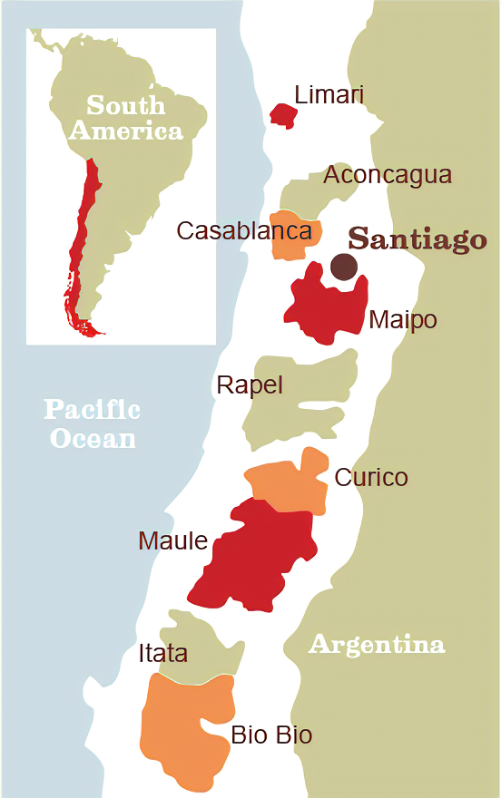

Vintage Longbottom H Sauvignon Blanc
2018 | $11.99
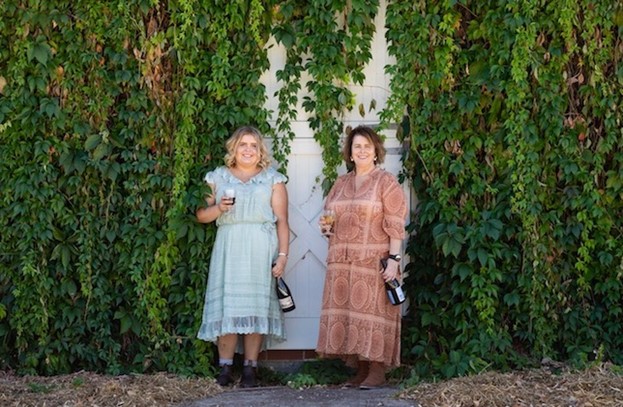
DESCRIPTION
Kim Longbottom has built her wine business around the core message that family comes first.
Twenty years after releasing her first wave of classic red wines with husband Mark from the Limestone Coast’s famed Padthaway region, a new chapter in the Vintage Longbottom story has begun with the arrival of daughter Margo into the company. Their family story continues and now includes the next generation.
Margo brings with her a family-instilled passion for wine as well as a vibrant new outlook stemming from her studies in fashion, digital marketing, and business.
Surrounded by wines and vines all her life, she freely admits she loves the lifestyle that comes with the business as well as the demanding work, from getting her hands dirty during vintage to the essential sharing of the admin load and vital new community connections via social media.
Hailing from New Zealand’s famous Marlborough region, wine has been one of Kim’s life-long passions – and one she shared with her late husband Mark, a third-generation pastoralist with a natural affinity for the land.
Together they planted their Padthaway property with vines in the early 1990s, releasing their first Henry’s Drive wines in 1998, the same year their daughter Margo was born.
Sadly, Mark passed away in 2008, remembered lovingly as a loyal and honest man with a wry sense of humor.
Committed to continuing their business and honoring his memory, Kim has built the company to be a successful export and domestic producer with an eye for classic Australian wine styles.
Now joined by Margo in the next chapter of their family story – Vintage Longbottom – this inspiring mother and daughter enterprise has shifted focus to the premium South Australian regions of McLaren Vale and the Adelaide Hills.
The wine operation established by Kim and Mark Longbottom, Henry’s Drive Vignerons, paid direct homage to the history of their property where a horse-drawn mail and passenger coach service, run by Henry John Hill, operated in the 19th century.
Like the coach drivers of that era, who earned the much-admired respect of locals for their enduring energy and devotion to duty, Kim and Mark became leading family wine producers connected deeply to the Padthaway region in south-east South Australia, now part of the larger zone known as the Limestone Coast.
The Longbottoms set up a range of highly regarded wine brands marking the property’s history: Henry’s Drive, The Postmistress, The Scarlet Letter and Morse Code.
After Mark’s death in 2008, Kim continued the business with the same commitment and devotion. And with Margo now on board the time came to continue the family story with a fresh start as mother and daughter in new surroundings.
Vintage Longbottom H Sauvignon Blanc 2018
The fruit for this wine is sourced from Lenswood Vineyard in Adelaide Hills. Approximately 45% of the free run portion of the juice was sent to barrel for fermentation and gentle lees stirring for 7 months in 20% new French puncheons and the remaining 80% in one and two-year-old puncheons.
TASTING NOTES
NOSE: The 2018 H Sauvignon Blanc has aromas of nettle, lime zest and papaya.
PALATE: The palate is medium bodied with flavors of preserved lemon, nectarine, and cantaloupe melon, made complex by subtle French oak nuances. The wine finishes fresh with a balanced texture and acidity.
PAIRING: The palate is medium bodied with flavors of preserved lemon, nectarine, and cantaloupe melon, made complex by subtle French oak nuances. The wine finishes fresh with a balanced texture and acidity.
CHEESE PAIRING: Goat cheese, Brie, Gouda, Swiss, Gruyère, and Cheddar. Due to Sauvignon Blanc's acidity, tropical flavors, and herbaceous aromas, we highly recommend choosing goat cheese.
Fun FACTS: Pale gold in color, this Sauvignon Blanc from the recently relocated Henry's Drive team, is a shining example of the Adelaide Hills' ability to make world class Sauvignon Blanc. The nose is a perfumed fruit bowl of pineapples, apples, limes, and orange peel with touches of honeysuckle. It is medium in weight, with slippery texture and fantastically crunchy acidity with a copper-penny-like tang. Food-friendly, this would make an excellent bottle to bring to a summertime dinner party. Editors' Choice. Wine Enthusiast Magazine- 91 Points
Light straw yellow. Displays musky lemon pith and pear skin scents and suggestions of succulent herbs and jasmine. Chewy and focused on the palate, bitter citrus rind and dried peach flavors open slowly on the back half. This has weight as well as liveliness. Closes long and nervy, with the pear and herb notes repeating. Raised in French oak barrels of varying size, 20% of them new.
Vinous Magazine- 91 Points
WINERY WEBSITE: Vintage Longbottom
Adelaide Hills, Southern Wales, Australia
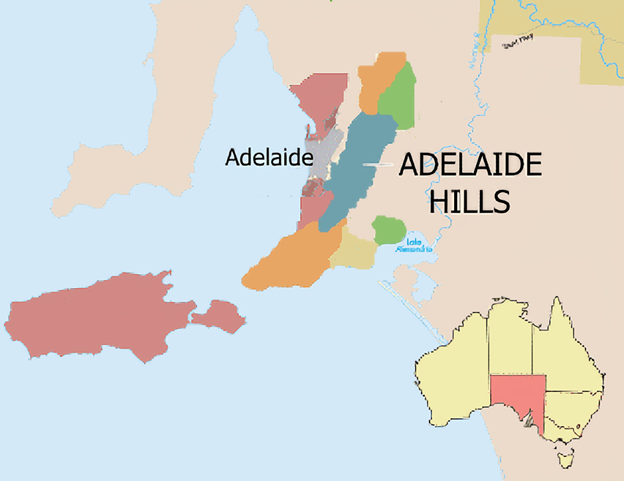
April 2023 WINES
FEBRUARY 2023 WINES
-
ECHEVERRIA GRAN RESERVA CABERNET
-
BEL VENTO PINOT GRIGIO
-
BLACK CABRA MALBEC
-
COPPOLA MAMMARELLA RED BLEND
-
BODEGAS VOLVER "TARIMA" MONASTRELL
-
DOMAINE DE MILLET COLOMBARD

Echeverria Gran Reserva Cabernet
Cabernet | 2018 | $10.99
DESCRIPTION
The vineyards at Vina Echeverria are in the Curicó Valley and the rows are planted in an east-westerly direction to potentiate the sun’s exposure. They work with a model of micro viticulture, which means that each plot, no more than half a hectare, is identified according to its terroir and microclimate and planted, pruned, irrigated, and harvested accordingly, resulting in grapes of optimum quality and flavor.
The Echeverria family came to Chile in the 1750s, from a little town called Amezqueta in the Basque region of Spain. They established agricultural properties in the north of Santiago, where they planted vineyards, among other crops. Some 200 years later in 1930, Roger Piffre de Vauban, a French engineer from Montpellier, and Roberto Echeverria’s maternal grandfather, traveled to Chile and hence to Chile’s Curicó Valley some 200 meters south of the capital Santiago. Here he planted ungrafted vines from pre-phylloxera French origin on an expanse of land called La Estancia, in a little town called Molina. At the time he established what was a frontier technology winery with French equipment and machinery brought directly from France. Its aim was to supply high quality wines for the domestic market.
Today Vina Echeverria is still a family-owned and managed estate winery with Roberto Echeverria as President, and its vineyards and house occupy the same location as they did nearly 100 years ago. The 65 hectares of sustainably farmed vineyards in Chile’s Central Valley are planted, tended, and harvested by the Echeverria family.
Echeverria Gran Reserva Cabernet 2018
The Gran Reserva cabernet is a dark and dusty garnet color made from 100% cabernet grapes from select vineyards that were hand-harvested and aged in French oak barrels between 10 and 12 months.
TASTING NOTES
NOSE: Intense aromas of red cherries and black pepper with a smoky, earthy background.
PALATE: In the mouth this wine is medium-bodied with fresh, mellow tannins, notes of black cassis, black cherry, and eucalyptus with a long and elegant finish.
PAIRING: Pot roast, steak and potatoes, and beef stew.
FUN FACTS: Vegetarian & Vegan
Tim Atkins Chilean Wines Report UK 90 Points – Echeverria Gran Reserva Cabernet Sauvignon 2018
Wine & Spirits Magazine- 90 Points – Echeverria Gran Reserva Cabernet Sauvignon 2018
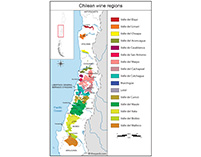

Bel Vento Pinot Grigio
PINOT GRIGIO | 2019 | $9.99
DESCRIPTION
Pinot Gris is the French name for the grape that also goes under the Italian name: Pinot Grigio. The names are often used interchangeably, but the wines differ in style and character, like most grapes that are so widely planted.
Pinot Gris usually indicates wines that are richer and fuller. In Alsace, where it is the third most planted grape after Riesling, the wines tend to be full-bodied with moderate acidity and a luscious fruitiness reminiscent of ripe pear and apricot. Generally speaking the wines are often rich, lightly perfumed and more colorful than other whites.
In comparison Pinot Grigio often suggests wines that are dry with medium acidity and melon, peach, and citrus flavors as well as aromas. It’s also under the name of Pinot Grigio that this grape has received its international fame.
Friuli-Venezia Giulia reigns supreme as Italy’s economic center, and premier producer of world-class white wines. Situated in the northeastern corner of Italy, this region boasts an extensive cultural, historic, artisan, and culinary wealth. Bordered by Austria and Slovenia, Friuli-Venezia Giulia is the ultimate travel destination spot. From sandy coastal beaches in the south, to skiing the famed Dolomites in the north, the diversity of this beautiful landscape is truly awe inspiring. When many people think “Italian White Wine” Pinot Grigio is the first that comes to mind and with good reason! Pinot Grigio is the most imported variety of wine in America.
Winemaking in the region dates back to ancient Roman times, and today is represented with four DOC, and ten DOCG appellations—most notably Colli Orientali del Friuli and Collio Goriziano, two regions producing superior wines. Although the variety is indigenous to Burgundy in France, it is now grown in many wine regions all over the world. It is perhaps most commonly associated as coming from Italy, where it is produced in large quantities.
TASTING NOTES
NOSE: Aromas of granny smith apples, yellow pears, and lemon zest.
PALATE: Bel Vento is crisp and dry with lovely notes of citrus, pear, melon, and peach.
PAIRING: Aperitif, shellfish, vegetarian, and mushrooms.


Black Cabra Malbec
Malbec | 2020 | $9.99
DESCRIPTION
The Black Cabra (goat) is a common sight in the Argentine Andes where our winery and vineyards are located. These wines are produced from our estate vineyards and crafted in our state-of-the-art winery, Bodega Zolo, by winemaker Fabian Valenzuela and vineyard manager Carlos Correas. The President and Owner is Patricia Ortiz. Our wines are 100% Sustainably Farmed. By far the largest and best-known winemaking province in Argentina, Mendoza is responsible for over 70% of the country’s enological output. Set in the eastern foothills of the Andes Mountains, the climate is dry and continental, presenting relatively few challenges for viticulturists during the growing season. Mendoza is divided into several distinctive sub-regions, including Luján de Cuyo and the Uco Valley, and is the source of some of the country’s finest wines.
Black Cabra Malbec 2020
This wine is 100% malbec grape that comes from 11-year-old vines that are hand-harvested. A cold pre-maceration takes place for 3 days to extract color and aromas. It is then fermented in stainless steel tanks for approximately 10-14 days in contact with French innerstaves. Then, it is bottled and aged for 6-8 months in oak barrels.
TASTING NOTES
NOSE: Aromas of black cherry, blueberry and plum with hints of leather, cedar and smoke.
PALATE: Lush flavors of plums, strawberries, cherries and a hint of vanilla with a fresh and balanced mouthfeel.
PAIRING: This wine will pair nicely with steak game, pork, and lamb as well as fattier fish like salmon.
FUN FACTS: James Suckling- 91 Points. Lots of rich, ripe fruit, but in a balanced and serious way. Full-bodied with medium, round, and savory tannins and a delicious, juicy finish. Serious value. Drink or hold. Best Buy, Wine & Spirits (’20)
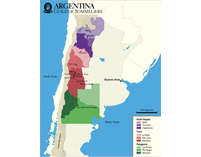

Coppola Mammarella Red Blend
Red blend | 2018 | $12.99
DESCRIPTION
Francis Ford Coppola Winery was a family-owned and operated winery located in the heart of Sonoma County, the birthplace of the California wine industry. Situated in Alexander Valley, an appellation known for producing superior zinfandel and cabernet sauvignon, Francis Ford Coppola Winery produces more than forty wines and entertains visitors in an inspiring vineyard setting. In August 2021 the Delicato Family Vineyards announced the acquisition of the Francis Ford Coppola wine portfolio and two facilities anchored in Sonoma County, the Francis Ford Coppola Winery and the Virginia Dare Winery located in Geyserville.
TASTING NOTES
NOSE: Aromas of bright fruit jam, violets, and spice notes.
PALATE: This wine is soft and round with integrated tannins, juicy, fruit-forward and full of black cherries, red currants, strawberry jam, and plum with a hint of mocha.
PAIRING: Beef, lamb, and veal.

Bodegas Volver ‘Tarima’ Monastrell
MONASTRELL | 2020 | $12.99
DESCRIPTION
The project of Bodegas Volver was founded in 2004 by Rafael Canizares, enologist through studies and viticulturist through his family tradition of four generations of winemaking. Their most prized assets are vines between 30 and 90 years old, and indigenous varieties cultivated in a sustainable way with minimal intervention.
Bodegas Volver ‘Tarima’ Monastrell 2020
This wine is 100% Monastrell grape. The grape is also known as Mourvèdre or Mataro in other parts of the world. It is a prominent component of France’s Rhone blends called GSM (Grenache, Syrah, Mourvèdre) Monastrell, according to wine expert Jancis Robinson, often have wild game or earthy notes with soft red fruit.
The grapes for ‘Tarima’ Monastrell are sorted meticulously at the winery, and fermented in stainless steel tanks by indigenous yeast. Malolactic occurs in the tank, and the wine is transferred to second vintage French oak barrels for aging. In this case, the used barrels from the making of the previous year’s Tarima Hill wine. Then, it is aged for 6 months in second vintage French oak Bordelaise and Burgundy barrels. Tarima is aged in the barrels used for the previous vintage’s Tarima Hill.
TASTING NOTES
NOSE: Red raspberries, cooked cherries plums, and mulberries show on the nose.
PALATE: The wine is a mix of black and red fruit wrapped in herbs, chocolate, and spice.
PAIRING: This medium to full-bodied wine has high tannins. It naturally pairs well with hearty and meaty dishes. For example: hamburgers, pizza, short ribs, veal, pork, lamb, sausage, game, and grilled meats. It would be perfect for a barbecue.
FUN FACTS: James Suckling- 90 Points

Domaine de Millet Colombard
Colombard | 2020 | $9.99
DESCRIPTION
Château de Millet is in Eauze, in the Gers, in Gascony and in the heart of Armagnac. Initially devoted to mixed farming and Armagnac production, the estate now reserves 80 hectares of vines to produce Côtes de Gascogne "Domaine de Millet" wines. Francis and Lydie Dèche, owners, follow in the footsteps of the previous five generations by committing themselves to a policy of quality: traditional grape varieties, rational cultivation of the vineyard and constant evolution in the methods and means of vinification.
The green hills of this part of Gascony are traditionally the domain of white wine grapes making up 80% of production. Colombard, ugni-blanc, Gros-Manseng, chardonnay, sauvignon, the wines of the Domaine de Millet celebrate the alliance of traditional and famous grape varieties. The production of these wines skillfully combines ancestral wine-making know-how and modern technology: cold stall of grape musts, fermentation at controlled temperature, and aging on lees.
With the diversity of terroirs that is offered to it and the richness of the soil, in Gascony, the Millet vineyard has given way, over the years, a little room to red grape varieties known from our Southwest: Merlot, Cabernet, Tannat, and Egiodola.
Domaine de Millet Colombard 2020
Domaine de Millet is made of 50% colombard and 50% ugni-blanc grapes. Harvested and destalked at the same time, the grapes are drained into tanks that are hermetically protected from the harmful effects of oxygen. The fresh grape must is stabilized in cold temperatures for 6 days which allows the aromas in the grapes to fully express themselves whilst in turn slightly reducing the acidity. The fermentation takes place under strict temperature control over 2 weeks. The two varieties are vinified separately before being blended and the wine is bottled early, as soon as it displays its full potential of freshness and elegance.
TASTING NOTES
NOSE: Intense nose with lots of freshness that is complex and refined. Dominated by floral notes and fruits like acacia and white peach.
PALATE: In the mouth the attack is full, complex, and invigorating with a long citrus finish.
PAIRING: It is a perfect match for starters, goats cheese, asparagus, fish, and shellfish.

CONTACT HOLIDAY MARKET WINE DEPARTMENT



